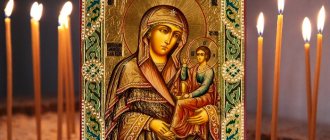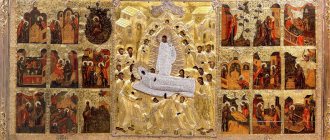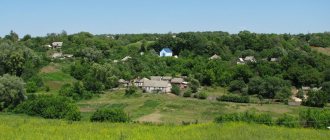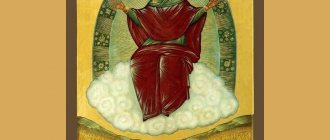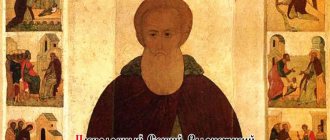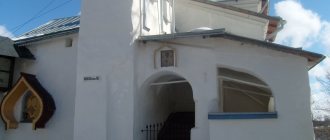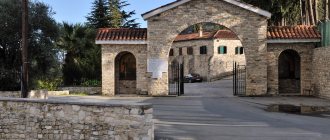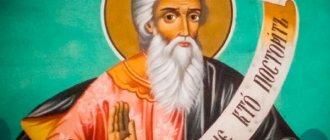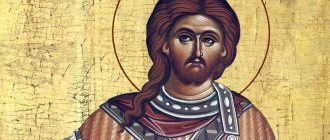The icon of the Mother of God “Spreader of the Loaves” is remembered on October 28. The image appeared relatively recently (at the end of the 19th century) and is noticeably different from the usual images of the Mother of God. “The Spreader of Bread” is considered a purely Russian iconographic subject, which has not spread to other national Orthodox communities.
The history of the appearance and acquisition of the Bread Icon
The bread icon of the Virgin Mary has been known since the 16th century. In 1538, an unusual wanderer wandered into the Solovetsky Monastery. Simple and unkempt clothes and an emaciated appearance could not hide the pilgrim’s education.
The secret of origin was revealed only to the confessor and abbot. He turned out to be a wealthy Moscow boyar, Fyodor Kolychev, who later became Metropolitan of the Moscow Patriarchate. Having reached the age of 30, tired of court intrigues, Fyodor decided to abandon worldly life and retired to a monastery.
After serving for some time as a novice, Fedor took monastic vows under the name Philip. The monastic bakery was designated as the place of obedience of the monk. The baking was very heavy. Every day we had to make a huge amount of prosphora and bread not only for the brother monks, but also for the pilgrims.
But Philip did not grumble, patiently enduring obedience. Prayers helped him endure all the hardships. Philip fervently prayed first of all to the Queen of Heaven. And the Mother of God thanked the monk, sending him her image.
Not wanting to part with the sacred image, Philip always kept the icon with him, placing it near the stove. Before handing it over to the brothers, the monk placed all the sweets before the Mother of God, asking for her blessing. The monks who came for bread seemed to receive it from the hands of the Mother. For this, the sacred image began to be called Pane (“Bread”) or Baked.
Years later, Philip became the abbot of the monastery, serving in this capacity for 18 years. Then he was appointed metropolitan by Moscow Tsar Ivan the Terrible.
Our Lady of Bread was greatly revered by the inhabitants of the Solovetsky Monastery, and her miraculous power became known in many parts of Russia. The miraculous image was kept in the Transfiguration Cathedral for a long time, but after the closure of the monastery it was lost.
Over the years of the icon's existence, several copies were made from it, one of which was sent to the Leushinsky Convent. It was given to the nuns of the monastery by an unknown pilgrim in 1880. The abbess of the monastery ordered that the sacred icon be placed in the bakery and the sleepless Akatist read before it every day.
With the advent of Soviet power in 1931, the monastery was closed. During the creation of the Rybinsk Reservoir (1941-1946), the Leushinsky Monastery was under water, and the holy image was irretrievably lost.
The next appearance of the bread icon came in 1941, during the siege of Leningrad. A miraculous image unexpectedly appeared to a simple woman, Natalya Vasilievna Fedorova. While collecting family benefits, a woman became a target. Rising from the ground after the bombing, he saw three icons, one of which had the inscription “Bread”.
For many years, the woman’s family kept the sacred image. Before her death, Natalya Vasilievna’s daughter Nina Mikhailovna donated the image of the Mother of God to the temple of the icon of the Mother of God “In Search of the Lost.”
How to pray correctly in front of the “Different of the Loaves” icon
A consecrated icon can be purchased at any church shop and placed in a home iconostasis. Prayers to the Heavenly Intercessor are offered with reverence and faith, without haste, without demanding immediate fulfillment of one’s desires. To appeal to the Mother of God, they read the Mother of God prayers or pray in their own words.
On the day of veneration of the miraculous image of the Spreader of Loaves, a prayer service is ordered in the church, an akathist is read with special additions written by Ambrose of Optina. Help in a good undertaking will always come, the main thing is to maintain sincere faith and trust in the mercy of God.
Description and meaning of the image of the Mother of God
For a long time, the Solovetsky Monastery remained without a miraculous image. Not long ago, the monastery was replenished with one of the lists of the Bread Icon.
The baked icon was purchased by one of the benefactors and transferred to the Solovetsky courtyard before the Feast of the Nativity of the Virgin Mary. Another list was compiled by Valentina Zhdanova, a teacher at the St. Petersburg Theological Seminary.
The icon depicts the Blessed Virgin Mary alive:
- on the head of the Virgin Mary there is a blue cap (plate);
- a red omophorion is thrown over a blue tunic;
- three stars shine on the shoulders and forehead of the Virgin Mary, symbolizing eternal virginity;
- the head is bowed to the Divine Child sitting on the hand of the Virgin Mary;
- the second hand points to Christ, directing believers to Jesus;
- the savior blesses the Mother with his right hand;
- in his left hand the Young Man holds a rolled scroll.
On both sides of the Mother of God are images of the Apostle John the Theologian and St. Nicholas the Wonderworker. This icon is located in the Assumption Church in St. Petersburg, erected in honor of the victims of the siege of Leningrad.
The miraculous image of the Mother of God reminds all people of their daily bread. But in the gospel sense, “bread” is interpreted much more broadly than ordinary food.
According to the Gospel, spiritual communication with the Lord is understood as daily bread, without which the human soul is dead. Having accepted God into themselves, Orthodox Christians feed the soul with bread, preparing it for eternal life.
Icon of the Image of the Mother of God “Bread (Baked)” 15x10cm on natural wood in a gift box
The icon is written on a natural wooden board made from solid bog oak. The image was copied from the author's list using a method that has received the approval of the Russian Orthodox Church.
When finalizing the image, special frontage primers, leveling varnishes and tempera paints were used. The crown and fields of the icon are manually decorated with relief patterns and natural pearls or semiprecious stones.
How does the “Bread (Baked)” icon of the Mother of God help?
- From hunger and poverty.
- Overcoming financial difficulties.
- Finding and saving work.
- Helps relieve anxiety and gain faith in the future.
Authenticity Guarantee
Each pictorial image is accompanied by a numbered certificate, which details all the information about the icon:
- Artist's name,
- The materials from which it is made are
- Guarantee of compliance with the canons of the Orthodox Church.
Gift wrap
Each icon is placed in a beautiful wooden box made of natural wood with a hinged lid and a lock.
Very convenient for a special gift!
Image
The Icon of the Mother of God “Bread” appeared to Saint Philip of Moscow while he was asceticizing in the Solovetsky monastery. In the world, the boyar Feodor Kolychev, at the age of 30, he left public service and, in simple clothes, secretly retired to the Far North. Without revealing his name, he worked at general obediences as a simple monk. Soon the reverent novice was assigned to the bakery - making prosphora and bread for the fraternal meal. It was not easy for the noble boyar in this very difficult obedience, however, despite all the hardships, he did not give up prayer. The Mother of God, to Whom the monk Philip always resorted with special zeal, consoled the novice by revealing to him Her miraculous image. This happened in the 1540s. Philip placed the new icon of the Mother of God at the place of his obedience - near the baking oven, and from then on he had the habit of placing all the newly baked prosphora and breads in front of it, as if offering it to the Mother of God Herself. The brethren, coming for prosphora and bread, took them from the image, as if from the hands of the Most Pure One. The icon also began to be called “Baked” or “Bread”.
After the martyrdom of St. Philip in 1569 (January 22 n.st.), the image of the “Bread” Mother of God became one of the most revered in the Solovetsky monastery and became famous in many parts of Holy Rus'.
The beginning of the Never Sleeping Akathist in the Leushinsky Monastery
The beginning of the “rite of the Never-Sleeping Akathist” was the offering in the late 1880s. one pious pilgrim to the Leushinsky Monastery from the Solovetsky Monastery of the copy of the miraculous icon of the Mother of God, called “Bread”. This holy icon was solemnly greeted by the sisters two miles from the monastery, carried into the holy gates in a procession and placed in the bakery. With the blessing of the Mother Superior, the sisters, when receiving bread, had to make three bows to the Mother of bread, accepting the bread as if from Her hands, and read the Akathist before her every evening. After this, despite the poverty, the monastery was never left without bread. Abbess Taisia had the idea to arrange a special cell for the Bread Icon, in which she gave her blessing to collect lists of other revealed icons of the Mother of God and read the Never-Sleeping Akathist before them.
Obviously, Mother Taisiya knew about the existence in Diveevo of a chapel blessed by Father Seraphim, in which all the icons of the Mother of God were collected and where the Reverend commanded to read the Never-Sleeping Psalter. In imitation of the Diveyevo chapel, St. Taisiya blessed in 1905 erect a similar one in Leushino. The materials for construction were the remains of the newly built winter Trinity Cathedral with the chapel of St. Seraphim of Sarov. The revered icon of Our Lady of Bread and other copies of Her icons were transferred to the new chapel, erected next to the Cathedral of Praise. The chapel was consecrated on July 10, 1906 by Fr. John of Kronstadt. Having himself ardently revered the Most Pure Mother of God, Dear Father, having exalted the praise of the Mother of God in the Chapel, exclaimed in spiritual delight: “If I lived here in the monastery, I would not have left this chapel - how desirable it is to glorify the Lady.” Almost forty years until its closure in 1931. in Leushino, the Archangel greeting to the Mother of God was silently proclaimed: “Rejoice, O Blessed One.” “According to the reverent desire of the abbess, the holy Name of the Mother of God, the Vigilant Intercessor and Patroness of this desert monastery did not cease to be glorified for a minute.”
Unfortunately, the revered Leushinsky list of Our Lady of Bread was lost during Soviet times. After the flooding of the great monastery, its whereabouts are unknown. Nowadays, there is a metochion of the Leushinsky Monastery in St. Petersburg.
The parishioners of the Leushinsky Metochion Church spent a long time looking for the image of the “Bread” Mother of God. Few copies have been made of this extremely rare image. A small black and white image in Poselyanin’s famous book “Miracle-Working Icons of the Mother of God” gave only a general idea of his iconography - close to “Quick to Hear”. Finally, a year and a half after the resumption of the tradition of the Never Sleeping Akathist on Saturdays at the Leushinsky courtyard, the “Bread” icon appeared in the church. It turned out that a list of a rare image on gold is kept in one of the St. Petersburg apartments as a family shrine. The chairman of the board of the Radetel Foundation, Nina Yakovlevna Chalenko, informed us about this, inviting us to give communion to the custodian of the icon.
Nina Mikhailovna Fedorova is a native Petersburger. She was born in 1935 and lived all her life in St. Petersburg. She did not leave him even during the terrible years of the siege. Nina Mikhailovna still cannot calmly talk about that time: tears immediately well up.
During the blockade, she and her three-year-old brother Anatoly were left alone with their mother Natalya Vasilyevna. In the autumn and winter of 1941 it was especially difficult. “There was no water, no food,” recalls Nina Mikhailovna. 125 grams of bread - “it was so black, with earth and sawdust” - could not support life. There came a time when I had to eat nothing but newspapers for three days. “We ate the newspaper for three days and said: Mom, we don’t want any more, eat it yourself.” At this terrible moment, the Mother of God showed Her unexpected intercession. Here is the story of Nina Mikhailovna Fedorova about the appearance of the “Bread” icon:
“Mom went to get at least some child support, and at that time the shelling began. This happened on Malaya Morskaya Street near the Institute of Aircraft Instrumentation, on the corner. A terrible whistling began - when shells fly close, they whistle. Potholes appeared on the ground. A sailor running past shouted: “Get down, everyone!” - and pushed my mother. Mom fell, and when she got up, there were three icons under her. When my mother walked, there was nothing there, but when she stood up, suddenly there were icons. She was embarrassed and thought: “Oh my God, what is this?!” What do i do?" I realized that the find was not accidental - it was a phenomenon. And then she decided to go to one pious old woman and ask her. She came and said: “What should I do, what should I do? Here are three icons I found.” She answered: “You thought death was just around the corner, but it was behind you,” and advised her to keep the icons and keep them carefully.” Having read the name on one icon - “The Most Holy Theotokos of Bread” - Natalya Vasilyevna felt hope and returned home. The next day, an unfamiliar soldier gave her a kilogram of oats. Our Lady of Bread sent bread. “This was the first help from the icon,” says Nina. “Mom put the oats on the stove and we pecked one grain at a time, and that’s how we were saved.” Since then, these three icons have been in our home: the Mother of God of Bread, John the Theologian and St. Nicholas - bronze. Mom prayed in front of these icons and never left them.”
Having learned the story of the Never Sleeping Akathist, Nina Mikhailovna agreed to give the image for three days, so that the Akathist of the Mother of God would be sung before it, as in the previous Leushino. Nina Mikhailovna’s friend, Nina Yakovlevna, brought the shrine to the temple of the Leushinsky courtyard.
On March 5, 2003, for the first time since the closure of the Leushinsky Monastery, the reading of the Never Sleeping Akathist was performed in front of the Bread Icon of the Mother of God. For three days, akathists were continuously read, and the consecration of bread and crackers was performed. The Mother of God showed a sign to a person these days. A servant of God named Lyudmila came to the temple, who said that three days ago she dreamed of the Mother of God and ordered her to bake pies, handing over an invoice containing 150 pies. The servant of God, waking up, was perplexed as to why and for whom these pies needed to be baked. In the evening, she heard on the radio a story about Our Lady of Bread and the bringing of Her icon to the church of the Leushinsky metochion. She decided that it was the Mother of God that she should prepare the pies for. Imagine her surprise when she, seeing the icon of the Mother of God of Bread, recognized in it the Mother of God who had appeared to her in this image. The 70 pies brought were sacred and blessed to all pilgrims. The next day, Lyudmila brought another 80 pies, thus fulfilling the obedience given to her in a dream. Someone remembered that the Monk Seraphim of Sarov gave his blessing to read “Rejoice to the Virgin Mary” exactly 150 times on the canal in Diveevo. Probably the number of pies of the Mother of God of Bread was not accidental.
In our days, a copy of the icon of the Mother of God “Bread” was written for the Assumption Church of St. Petersburg, built in memory of the victims of the siege on the site of mass graves of citizens who died and perished during these terrible years. This is what people call “siege”. Icon painter Valentina Zhdanova, a teacher at the St. Petersburg Theological Seminary, painted the image on silver. The Apostle John the Theologian and Saint Nicholas the Wonderworker stand before the Mother of God. With the blessing of the builder and rector of the Assumption Church, Archpriest Victor, this image was painted in memory of those icons that a woman found during the harsh winter of the siege and which saved the lives of her children.”
The event turned out to be terrible when the scaffolding of the Assumption Church fell due to the pressure of a hurricane wind, under which Father Victor died, buried near the walls of the temple he built. It contains the icon of the Mother of God “Bread”, painted with the blessing of the priest. Parishioners of the Assumption Church ask for prayers for the repose of Archpriest Victor, through whose diligence and by the grace of God the ancient Solovetsky icon returned to the people of St. Petersburg.
In the Solovetsky monastery itself, to this day there was not even a single copy of the miraculous icon. And then information came to the Solovetsky Compound in Moscow that a copy of the Bread Icon had been seen in an antique store on Arbat. Very soon a benefactor was found and the icon was bought. This happened on the eve of the feast of the Nativity of the Blessed Virgin Mary, which is the patronal feast of the Solovetsky Metochion in Moscow. It is noteworthy that on the site of the appearance of the icon in the Solovetsky monastery, back in the years of St. Philip in 1859, a temple was also built in honor of the Feast of the Nativity of the Blessed Virgin Mary. Currently, this copy of the miraculous icon is located at the Solovetsky Metochion in Moscow and is open for worship every day.
All these blessed events have become a new phenomenon and glorification of the image with which the Mother of God, in our time of practical materialism of universal market values, reminds us of our Daily Bread and gives us the Bread of Eternal Life - our Sweetest Lord Jesus Christ.
An icon is the best gift, because by giving an icon, we express to a person the highest degree of Christian love - the wish for the salvation of the soul.
Veneration in Orthodoxy
The day of celebration and veneration of the Bread icon is set for September 21 according to the new style (September 8 according to the Julian calendar). On this day, many Orthodox churches hold a festive service dedicated to honoring the miraculous image. During the Liturgy, historical episodes are recalled during which the intercession of the Mother of God appeared.
After the service, the priest distributes a piece of blessed bread to the believers. Many people carry it with them, placing it in their homes to preserve it as a shrine, since bread consecrated in the name of the Blessed Virgin Mary brings both material and spiritual prosperity.
What is asked for in front of the Bread Icon of the Holy Mother of God
The bread icon of the Mother of God is considered miraculous. Many resort to prayer in front of the sacred image, asking for help:
- solve financial problems;
- maintain or find a decent job;
- avoid hunger and poverty;
- gain confidence in the future.
But human existence is not limited to nourishing the body. It is also necessary to nourish the soul in order to achieve spiritual unity with the Lord. Therefore, they turn to the Image of Bread with a request to send spiritual help, strengthening them in faith.
You can pray both at home and in church. Even if this image is not in the house, you can pray in front of any icon of the Most Pure Mother or in front of the iconostasis. The main thing is to sincerely believe that the Mother of God will listen to the request and provide help.
Where can you find the holy face of the Virgin Mary
In 1892, the Holy Synod ordered the removal of the original holy image from Shamordino. Subsequent events that happened to this icon were not recorded, so now its exact location is unknown. There are suggestions that the original is now kept in Lithuania in the village of Mikhnevo, near Vilnius. In the Shamordino monastery itself, which revived its service to the Lord in 1990, one of the newer traditional copies of the icon of the Mother of God is venerated.
The best article for you, go to: Venerable Kuksha of Odessa: prayer, icons, life
Days of celebration of the icon “Spreader of the Loaves”
Exactly one year before his death, on October 15, 1890, Father Ambrose of Optina ordered the novice to write down her will that every year on October 15 according to the old style (October 28 - according to the new style) a service would be held at the Shamordino monastery, an akathist would be read and an akathist would be sung in praise Mother of God.
God bless you!
Watch also the video about the icon of the Mother of God “Different of the Loaves”:
Prayer text
First prayer
Oh, who sings everything, Mati, feeds us with the bread of life!
Accept this prayer that sings from us, the unwavering servants of God, who are exalted for you and, standing in front of your image, you will be amazed at the greatness of your miracles, revealed since ancient times and still pouring out rivers of mercy into your daily bread, full of grace, appearing to all helpers, show us your wonderful intercession. Running to the holy icon of your “Grain”, do not despise us sinners, but, like the Merciful Mother, send us food and sustenance for a good time, feed our hungry soul and fill our hearts with heavenly sweetness and pray for all who they call you.
Bless every home and your people, create every good life and keep it in our homes in abundance of wheat; let us not cry to the Lord in vain: “Give us this day our daily bread.”
Oh, generous with the mercy of the Mother of God, who gave birth to the Word!
If you pour out on us sinners the greater part of your mercy and that mercy which is especially given to us in our sufferings, and whenever we find ourselves in difficult times, in our poverty and misery, we will remain, even if we want to receive from you are comfort and help, full of grace, do not perish our belly, like the servants of God, it is in poverty, but any contentment from you is more acceptable, your servants are always saved from all the fierce ones. O Mother, our loving God, Who organizes and directs our earthly life towards salvation, welcome our prayers and supplications; let our prayer not be in vain, but we, complaining about our sins, in our poverty, create and help, Lady, but in this life we greedily eat the tearful bread of true sins of repentance, since we are satisfied with the Bread of Animals, your blessed and most holy fruit womb forever and ever. Having entrusted to us your protection and your saving providence, your praise is unlimited, from our lips, below is faith and love for you, always understand what you like, and to save us, and our eyes trust you, Lady Mother of God, we sing hymns unceasingly You: Rejoice, Blessed, Rejoice, Admire; Rejoice, blessed one; Rejoice, forever glorified; and ask Your beloved Son, our Savior, for mercy for us sinners, everything pleases Him, with His Bread that saves our souls. Amen.
Second prayer
Queen of Heaven Most Holy Theotokos Immaculate Virgin Mary Mother of the Lord God and our Savior Jesus Christ.
With tears, we pray to You, zealous Intercessor, do not leave us, unworthy servants of God, for His mercy and protection, for He who has chosen the Russian land as an inheritance. Heavenly Mother We ask you not to leave us out of love for your Mother and to show immaterial bread, as if you were showing the Son of God in this world for the salvation of all people, do not leave us, as in famine and pestilence did not leave people without shelter, Faithful to the Triune God, God the Father, God the Son and God the Holy Spirit, the life-giving one.
And free the entire people from the invasion of dark forces, as in besieged cities and towns they freed and saved through prayers.
In front of your purest image, I showed a lot of mercy. Pray in tears, listen to us, as if during the siege of the Solovetsky Monastery they did not leave the ascetics and people, through the prayer of St. Philip, without the intercession and mercy of his Mother, as if in the besieged city of Sevastopol he showed heavenly bread, as if in the besieged city of Petrov, he showed much mercy and help from His Mother for all who seek refuge in their prayers before Your Pure Image of “Bread” during the years of the reign of godless authorities. Do not allow your opponents these days to exterminate the faithful people of the Holy Consubstantial and Indivisible Trinity and pray to Your Son and our God Jesus Christ that they will have mercy on all Orthodox Christians who appear before Your Pure Image. For the sake of love for your Mother, do not leave us as sinners. Without leaving Saint Philip, his descendants will find your holy image behind the grotto. Pray, listen to us, servants of Your Son and our Lord God and Savior Jesus Christ, and cover Your earthly inheritance and all people of the Orthodox faith with your cover. Flows to your noble image of “Bread” In these days, even those in power will neglect this people they are chosen to rule. Listen to us and do not leave us without a king, God’s anointed, as if you had chosen to reign on the soil of Russia.
